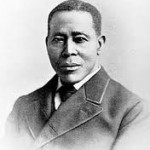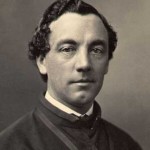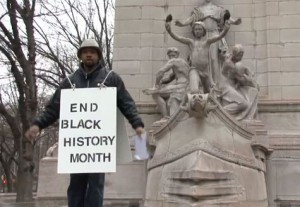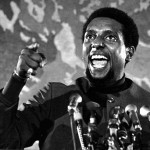Five Facts About Booker T. Washington (besides founding Tuskegee University)
Dr. Booker T. Washington founded Tuskegee University, a historically black college and university, in Tuskegee, Alabama in 1881. At the time there were no buildings or space appropriated for the purpose of the school. However, with a loan from Hampton Institute, Dr. Washington was able to purchase an abandoned plantation of about 100 acres that served for years as the central point of the school. To date the campus has grown to cover over 4,500 acres and is filled with historical landmarks. Here are five other historical facts that may amaze you:
Producer of first African American Nation Book Award Winner
In 1933 Ralph Ellison entered Tuskegee University as a freshman student on a music scholarship. While attending Tuskegee, Ellison began spending his free time reading up on modernist classics like T.S. Elliot’s Wasteland in the school’s library. After leaving the school he spent many years writing book reviews as he worked on his manuscript for The Invisible Man. Published in 1952, the book explores themes of identity, society, and i****t, and was the first book by an African American author to receive the National Book award for Fiction in 1953. Alice Walker’s The Color Purple is another notable African American award winner.
Sole Veterinary Medicine Ph.D. program at an HBCU
The Tuskegee School of Veterinary Medicine was founded in 1945 and has been an accredited program since 1949 by the Council on Education of the American Veterinary Medical Association. Tuskegee is the only HBCU that offers a doctorate degree in the field of study. In 1949 the first group of students graduated from the university with their Doctor of Veterinary Medicine degrees. Since then the school has gone on to produce approximately 75% of active African American Veterinarians in the country. Alumni work in over 40 states including the District of Columbia, Puerto Rico, U.S. Virgin Islands, and several other foreign countries. The school is also a major training ground for international students seeking careers in the veterinary industry.
Legacy of George Washington Carver
As if the legacy of Booker T. Washington wasn’t enough, Tuskegee University also owes much of its rich history to George Washington Carver. Washington recruited Carver to the university in 1896 to head the school’s Agriculture Department. It was here that Carver researched and developed some of his most noteworthy findings from the importance of crop rotation, self-sufficiency as a farmer, and the Jesup Wagon, Carver’s traveling classroom used to educate local farmers. While a member of the Tuskegee faculty Carver joined the Gamma Sigma chapter of Phi Beta Sigma Fraternity, Inc. The professional relationship between Carver and Washington was rocky at best, but Carver managed to stay at Tuskegee through the remainder of his life as beloved member of the faculty. Upon his passing in 1940, his life savings of $32,000 was handed over to Tuskegee to establish The Carver Foundation, the first and only foundation created by a Black scientist to support the continued training of young scientists.
Engineering Programs
Tuskegee is the number one producer of African American engineering graduates in the country, and offers some of the most competitive programs in Aerospace Technology, Chemical Engineering, Mechanical Engineering, and Materials and Science Engineering fields. The school also has two exemplary summer programs, (Minority Introduction To Engineering (MITE) and Freshman Accelerated Start- up and Training for Retention in Engineering Curricula (FASTREC)), that help introduce high school students and recent graduates to the exciting world of engineering.
Tuskegee Airmen
The name brings up obvious connections to the university, but few people know the real details behind the Tuskegee Airmen. The “Tuskegee Airmen” came into existence on May 15,1955 with the publication of “The Tuskegee Airmen–The Story of the Negro in the U.S. Air Force” by Charles E. Francis. Prior to that date, they were known as the “Red Tails.” There are an estimated 16,000 individuals (black, white, male, and female) who participated in the trainings at Tuskegee Army Air Field. The Airmen went on 1578 missions, which resulted in 112 aerial kills. Over the course of the war the airmen destroyed 260 enemy aircraft and accumulated over 800 medals for their distinguished service in the U.S. Air Force. Airmen did lose several US bombers, but reports are true that they had one of the best records for not-losing US bombers as they embarked on their missions. The then known Red Tails were one of the most highly sought after escorts in the armed services. This legacy is still evident today, as Tuskegee is the first and only HBCU to offer an accredited Aerospace technology program, where its graduates have gone on to pursue careers in the U.S. Armed Forces and other Government and Aerospace agencies.








